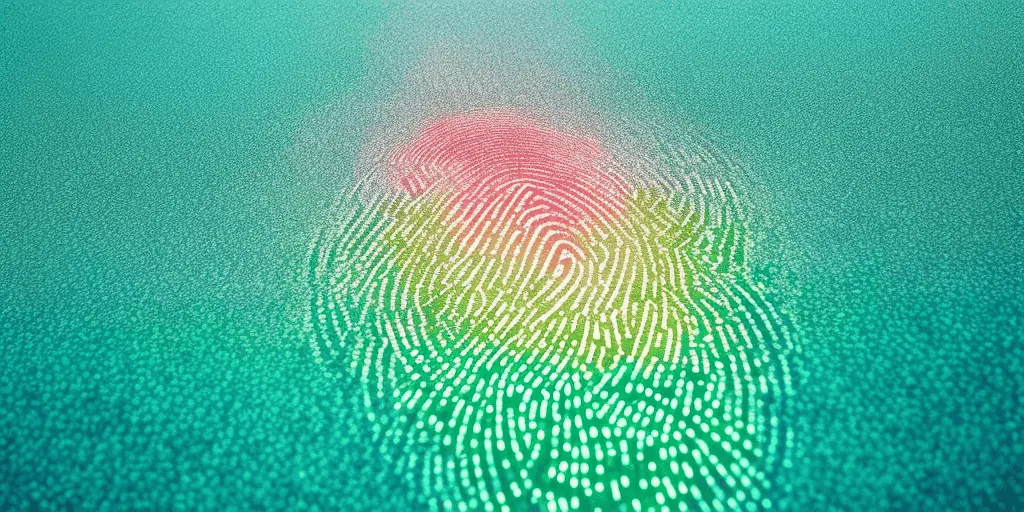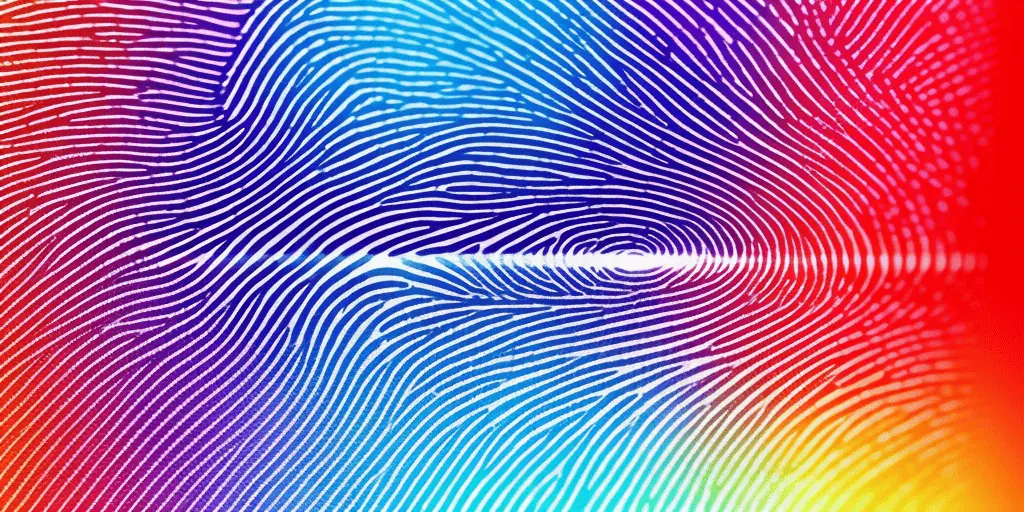Fingerprint data has become increasingly prevalent in various sectors, ranging from smartphone authentication to border security.
This article aims to shed light on how biometric data, such as fingerprints, is stored and secured. Understanding the storage methods employed by biometric systems is crucial for ensuring data privacy and protection.
What is fingerprint data?
Fingerprint data refers to the unique pattern of ridges and furrows found on an individual’s fingertips. This biometric information serves as a reliable means of identification because fingerprints are highly distinct among individuals. As a result, fingerprints have been widely adopted as a secure method of authentication in various systems.
How is fingerprint and biometric data stored?
There are several different methods used for storing fingerprint and biometric data:
On-device storage
One common method of storing fingerprint and biometric data is on the device itself. In this approach, the data is captured by a fingerprint reader located on the device. The captured data is then encrypted and stored locally on a specific piece of hardware, such as a secure chip or memory module.
Hardware recognition system
Another method of storing biometric data is through a specialized hardware recognition system. This system is designed to store and process large amounts of biometric information securely. The data is stored in a dedicated database within the hardware system, which can only be accessed by authorized personnel.
Portable token
In some cases, biometric data is stored on a portable token, such as a smart card or USB device. This allows individuals to carry their biometric data with them and use it for authentication purposes across different devices. The data stored on the token is typically encrypted to ensure its protection.
Database server
Large-scale biometric systems, such as those used by government agencies or multinational corporations, often employ a database server to store and manage biometric data. The database server is a centralized storage solution that enables efficient retrieval and matching of biometric templates.
Distributed data storage
With the advent of cloud computing, distributed data storage has become a popular method for storing biometric data. In this approach, the data is distributed across multiple servers located in different geographical locations. This redundancy ensures data availability and minimizes the risk of data loss.
Blockchain data storage
Blockchain technology is also being explored as a potential solution for storing biometric data. The decentralized and immutable nature of blockchain offers enhanced security and transparency, making it an attractive option for storing sensitive information like biometric data.

How secure is your stored fingerprint and biometric data?
When it comes to the security of stored fingerprint and biometric data, several measures are put in place to safeguard the information:
Encryption: Biometric data is typically encrypted using strong encryption algorithms. This ensures that even if the data is compromised, it remains unreadable without the corresponding decryption key.
Access control: Access to stored biometric data is restricted to authorized individuals only. This helps prevent unauthorized access and reduces the risk of data breaches.
Hashing: Biometric data is often converted into a mathematical representation called a hash. This hash is used for authentication purposes instead of storing the actual biometric data itself. This adds an extra layer of security as the original data cannot be reconstructed from the hash.
Biometric myth-busting
There are several misconceptions surrounding biometric data storage that need to be addressed:
Can cybercriminals steal my fingerprint or facial ID?
Contrary to popular belief, it is highly unlikely for cybercriminals to steal an individual’s fingerprint or facial ID through biometric data theft. Biometric systems use complex algorithms and secure storage methods that make it extremely difficult for hackers to replicate or extract the original biometric data. However, there have been some cases where biometric data has been compromised, such as the 2015 data breach of the U.S. Office of Personnel Management (OPM) where the personal information of more than 21 million people was compromised, including fingerprint data belonging to 5.6 million individuals
Biometrics are easily replicated
Another common myth is that biometric data can be easily replicated. While it is possible to create fake fingerprints or facial features, modern biometric systems employ advanced techniques such as liveness detection to ensure the authenticity of the captured biometric data.
Biometric data is unreliable and inaccurate
Some individuals are concerned about the reliability and accuracy of biometric data. However, extensive research and development have resulted in highly accurate biometric systems with low error rates. These systems undergo rigorous testing to ensure their reliability in real-world scenarios.
Biometrics are expensive and aren’t cost-effective in the long term
While biometric systems may require an initial investment, they offer significant benefits in terms of security and convenience. Over time, the cost of biometric technology has decreased, making it a cost-effective solution for many organizations.

FAQs – Fingerprint and biometric data
Let’s address some frequently asked questions regarding fingerprint and biometric data:
How are fingerprints stored?
Fingerprints are usually stored as a biometric template, which is a mathematical representation of the unique characteristics of the fingerprint. This template is created during the enrollment process and used for subsequent authentication.
How is biometric data stored?
Biometric data, such as fingerprints, is stored in a secure manner using advanced encryption methods. This ensures that the data is protected and cannot be easily accessed by unauthorized individuals.
Where is biometric data stored?
A: Biometric data is typically stored on a specific piece of hardware or software, such as a device or a biometric database. This allows for quick and easy access to the data when needed.
How is biometric data collected?
Biometric data is collected by capturing a biometric sample, such as a fingerprint image, using touch ID fingerprint sensors. The data is then converted into a digital format for storage and use.
What is a biometric database?
A biometric database is a centralized storage system that stores the biometric templates of individuals. This database is used to compare and match biometric data for authentication purposes.
Can biometric data be stored on a portable device?
Yes, biometric data can be stored on a portable token or device, such as a USB drive or a smart card. This allows for convenient access to the data while maintaining security.
How does a device recognize biometric data?
A device, such as a fingerprint scanner, uses the stored biometric templates to compare and match the biometric characteristics of an individual. If the data matches, access is granted.
Is biometric data stored in a database?
Yes, biometric data is stored in a database. This allows for efficient storage and retrieval of the information when required.
What happens if biometric data is breached?
In the event of a biometric data breach, appropriate measures are taken to ensure the data is protected. This may include implementing additional security protocols or notifying affected individuals.
Can I use my fingerprint to access biometric data?
Yes, you can use your fingerprint to access biometric data if it has been registered and stored in the system. This provides a convenient and secure way of authentication.
What are the advantages of biometric security?
Biometric security offers several advantages, such as increased accuracy in identification, convenience for users, and reduced risk of fraudulent activities. It provides a highly secure way of authenticating individuals based on their unique biometric characteristics.
How can you protect biometric data?
To protect biometric data, it is essential to implement robust security measures such as encryption, access control, and hashing. Regular security audits and updates should also be conducted to ensure the ongoing protection of the stored data.
Where does Android store fingerprint data?
Android devices store fingerprint data in a secure element called the Trusted Execution Environment (TEE). This hardware-based secure enclave ensures that the fingerprint data is protected from unauthorized access.
Can biometric data be hacked?
Biometric data is highly encrypted and stored using advanced security measures, making it extremely difficult to be hacked. However, it is always advisable to stay up to date with the latest security best practices and keep your devices protected.
What happens if biometric data is compromised?
In the event of a data breach, it is crucial to take immediate action. This may include revoking access privileges, notifying affected individuals, and implementing additional security measures to prevent further breaches.
Are biometric authentication systems foolproof?
While biometric authentication systems offer a high level of security, no system is entirely foolproof. It is essential to continue monitoring and improving biometric systems to stay ahead of potential vulnerabilities.
Can biometric data be used for purposes other than authentication?
Biometric data can also have applications in areas such as healthcare, law enforcement, and access control. However, it is crucial to ensure that the usage of biometric data complies with relevant privacy and data protection regulations.
Conclusion
As technology continues to advance, the storage and security of biometric data will play an increasingly crucial role in maintaining individuals’ privacy and protecting against identity theft.
By understanding how biometric data is stored and safeguarded, organizations can implement robust systems that enhance security while respecting privacy rights.

